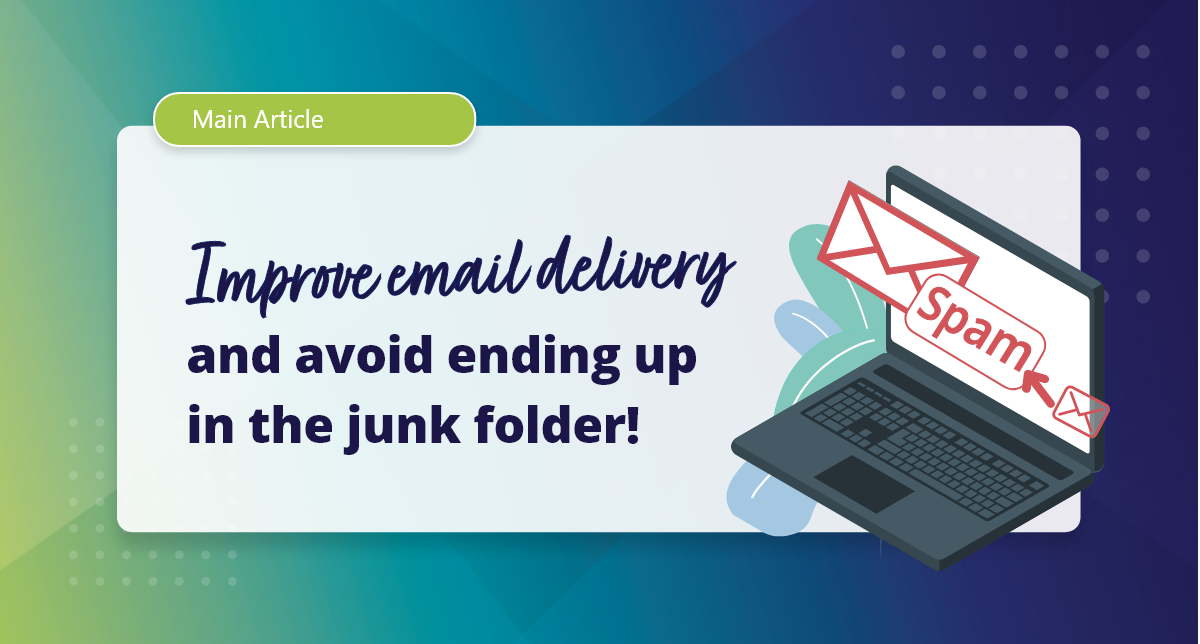September 2022
Improve email delivery and avoid ending up in the junk folder!

Receiving spam or having your own emails falsely blocked as spam is frustrating. Email is how many of us communicate with our clients, and when an email is not delivered, we look unresponsive and unprofessional.
To help maintain your brand integrity we have outlined what spam is, how it can be avoided and offer some tips to help improve the deliverability of your emails.
What is spam?
Spam refers to unsolicited messages sent in bulk by email, the technical term is Unsolicited Commercial Email (UCE). The name however comes from a Monty Python skit called “Spam” where every meal contains the canned luncheon, it is ubiquitous, unavoidable, and repetitive.
All jokes aside, spam is much darker than the name would have us believe. Spam can contain malware and viruses, gain confidential information, and scam vulnerable people.
The main method to stop receiving spam is through spam filtering services. In short, these services keep a list of common patterns that increase or decrease the likelihood that an email is spam, then use these patterns to determine acceptance or rejection.
Even with the day-to-day shift and tightening of spam filtering rules, there are some email authentication protocols that can help reduce the risk of having our emails marked as spam.
SPF Records
Adding an SPF (Sender-Policy Framework) Record to your domain name is one of the simpler forms of email authentication. An SPF record lists the IP addresses of any servers that are allowed to send emails for your domain name. For example, third party email programs like Mailchimp, Xero, HubSpot and RMS.
A missing SPF Record is one of the most common causes of emails not arriving at their destination.
DKIM Records
DKIM (DomainKeys Identified Mail) is another common protocol added to your domain name used to minimise email delivery issues. The main objective of a DKIM record is to help ensure content of any email hasn’t been changed between the sender and the recipient.
DMARC Records
The previous two protocols can be used to help determine that content is from an authorised source and ensure it hasn’t been modified in transit. But what if an email is found to be in violation of one of those rules? This is the role of the DMARC (Domain-based Message Authentication, Reporting, and Conformance) protocol.
If an email fails either the SPF or DKIM tests the DMARC Record will determine if the message should be rejected, quarantined, or let through.
Have an email deliverability issue
Reach out to us on 0419 527 705 or via email at contact@wwwart.com.au to discuss your unique circumstance and requirements.
Get Your Free Resources
Six articles a year focused on improving your small business. Learn about business development, resilience, brand identity and more...
Recent Articles
Febuary 2025
What does my word of the year have to do with business growth and development?
October 2024
Why are we investing time and money in reviewing our brand identity?
August 2024
Brand Consistency vs. Creative Freedom: Striking the Right Balance
June 2024
Website Needs Analysis: Unlocking Success for Your Business
April 2024
Finding purpose, joy, and identity after 26 years…
April 2023
Dialup, Floppy Disks and Design Before Computers
November 2022
Universal Google Analytics will be retired July 1, 2023. What does that mean for you?
September 2022
Improve email delivery and avoid ending up in the junk folder!
July 2022
Need to recharge, maybe it is time to get curious…
May 2022
How to improve your website ranking without paid SEO?
March 2022
Could a Brand Audit Benefit Your Business?
October 2021
3 ways developing a Value Proposition enhances your business




